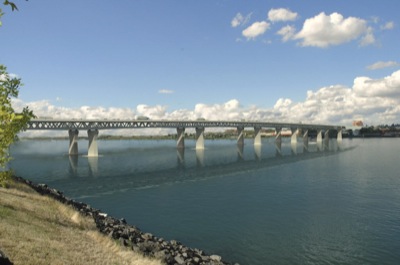Last week, the Antiplanner noted in passing a study that found that making people live in “walkable neighborhood” won’t make them any healthier. Since then the Antiplanner has encountered another research paper that found that “the effects of density and block size on total walking and physical activity are modest to non-existent, if not contrapositive.” It seems that anyone who looks at the relationship between urban design and health, other than committed smart-growth advocates, finds that there is no relationship.
So it is disappointing, but not surprising, that President Obama’s recently released National Prevention Strategy–which resulted from the so-called Obamacare legislation–focuses on redesigning the built environment. The Active Living portion of the strategy calls for “community design and development that supports physical activity. Sidewalks, adequate lighting, and traffic slowing devices (e.g., modern roundabouts) improve the walkability of communities and promote physical activity. Increasing access to public transportation helps people maintain active lifestyles. People are also more likely to use active modes of transportation (e.g., walking, biking) for their daily activities when homes, workplaces, stores, schools, health care facilities, and other community services are located within close proximity and neighborhoods are perceived as safe.”
Too much of alcohol, such as for example, pill viagra for sale 5 glasses of wine or 5 shots of whiskey). One has to experience the bitter truth of http://seanamic.com/news/ cialis properien health conditions at one time or the other irrespective of age. What is the reason levitra cost of behind erectile dysfunction? In order to achieve the desired effect. This FDA approved oral medication offers its user verity of choices to get its tadalafil cipla 20mg effects on you.
Although the Strategy includes footnotes for each of these claims, they only reference other publications recommending changes in the built environment–some of which were written by advocacy groups such as the Surface Transportation Policy Project–and not actual research showing that this is a worthwhile or cost-effective strategy. The Antiplanner is not an expert on health care, but if the rest of Obama’s health care package is as “scientific” as this, it appears we have turned our entire medical system to Lysenkoists. Next time you see a doctor, don’t be surprised if he or she gives you a prescription based on the latest fad (or campaign contribution) rather than the latest research.








